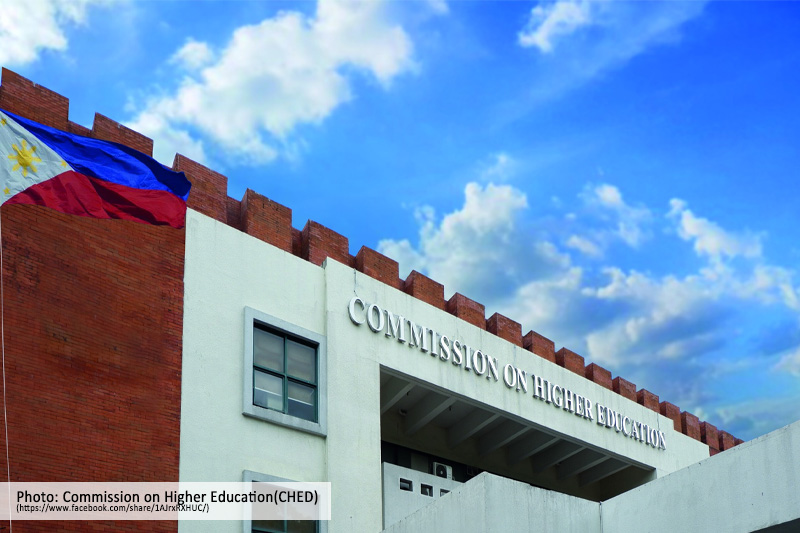THE government announced last week it has decided to extend an executive order (EO) that reduces the tariffs on raw materials used for making processed-meat products, such as offal and mechanically deboned meat (MDM).
This announcement came barely a few months after meat processors have sounded the alarm bells over the adverse impact of reverting the tariff of MDM to 40 percent once the quantitative restriction (QR) on rice expires on June 30.
The government made the decision to extend EO 190 just a week after the Tariff Commission held its first consultation. The government announced last week it has decided to extend an executive order (EO) that reduces the tariffs on raw materials used for making processed-meat products, such as offal and mechanically deboned meat (MDM).
This announcement came barely a few months after meat processors have sounded the alarm bells over the adverse impact of reverting the tariff of MDM to 40 percent once the quantitative restriction (QR) on rice expires on June 30.
The government made the decision to extend EO 190 just a week after the Tariff Commission held its first consultation Meat processors had warned that if the tariff on MDM is raised again to 40 percent, the poor would be most affected.
For one, canned goods remain as one of the cheapest sources of protein for the poor who cannot afford to shell out P200 for a kilogram of pork or P140 for a kilo of chicken. This warning may have prompted the government to immediately act on the petition of meat processors to extend EO 190 so the 5-percent tariff on MDM would be retained even after the rice QR lapses on June 30.
However, the same cannot be said for the rice sector, which continues to await the government's pronouncement for measures to mitigate the impact of the removal of the rice QR.
The reduction of the MDM tariff was one of the concessions given by the government so the World Trade Organization will allow the Philippines to retain rice-import caps until this year.
The Duterte administration, however, had already decided not to extend the rice QR. Under EO 190, the tariff on MDM would revert to 40 percent once the QR on rice expires, prompting meat processors and other affected sectors to intensify their lobby to extend the EO.
Unfortunately, the rice sector does not have the same recourse. That is why during the Tariff Commission hearing on EO 190 held on February 16, the Rice Watch Action Network appealed to the government to immediately put in place measures to help Filipino rice farmers become competitive after the import caps are removed.
Agriculture Secretary Emmanuel F. Piñol himself had admitted the government failed to prepare rice farmers for this, despite the existence of the rice QR for more than two decades. The QR on rice had effectively served as the Philippines’s protection from the deluge of cheap imports from neighboring Southeast Asian countries, which are efficient rice producers.
The Philippines is practically racing against time to find ways to cushion the impact of the removal of the rice QR on local farmers.
State-owned think tank Philippine Institute for Development Studies (PIDS) urged the government to set aside P18 billion a year from tariffs, that will be collected from rice imports once the government replaces the QR with a specific duty. At a tariff rate of 35 percent, PIDS said the government could collect as much as P28 billion in duties from 2.26 million metric tons of rice imports.
Before this happens, the Duterte administration should first craft a solid plan that would ensure the smooth transition of the Philippines from having a protected rice industry to one that will become virtually open to cheap rice imports.
This announcement came barely a few months after meat processors have sounded the alarm bells over the adverse impact of reverting the tariff of MDM to 40 percent once the quantitative restriction (QR) on rice expires on June 30.
The government made the decision to extend EO 190 just a week after the Tariff Commission held its first consultation. The government announced last week it has decided to extend an executive order (EO) that reduces the tariffs on raw materials used for making processed-meat products, such as offal and mechanically deboned meat (MDM).
This announcement came barely a few months after meat processors have sounded the alarm bells over the adverse impact of reverting the tariff of MDM to 40 percent once the quantitative restriction (QR) on rice expires on June 30.
The government made the decision to extend EO 190 just a week after the Tariff Commission held its first consultation Meat processors had warned that if the tariff on MDM is raised again to 40 percent, the poor would be most affected.
For one, canned goods remain as one of the cheapest sources of protein for the poor who cannot afford to shell out P200 for a kilogram of pork or P140 for a kilo of chicken. This warning may have prompted the government to immediately act on the petition of meat processors to extend EO 190 so the 5-percent tariff on MDM would be retained even after the rice QR lapses on June 30.
However, the same cannot be said for the rice sector, which continues to await the government's pronouncement for measures to mitigate the impact of the removal of the rice QR.
The reduction of the MDM tariff was one of the concessions given by the government so the World Trade Organization will allow the Philippines to retain rice-import caps until this year.
The Duterte administration, however, had already decided not to extend the rice QR. Under EO 190, the tariff on MDM would revert to 40 percent once the QR on rice expires, prompting meat processors and other affected sectors to intensify their lobby to extend the EO.
Unfortunately, the rice sector does not have the same recourse. That is why during the Tariff Commission hearing on EO 190 held on February 16, the Rice Watch Action Network appealed to the government to immediately put in place measures to help Filipino rice farmers become competitive after the import caps are removed.
Agriculture Secretary Emmanuel F. Piñol himself had admitted the government failed to prepare rice farmers for this, despite the existence of the rice QR for more than two decades. The QR on rice had effectively served as the Philippines’s protection from the deluge of cheap imports from neighboring Southeast Asian countries, which are efficient rice producers.
The Philippines is practically racing against time to find ways to cushion the impact of the removal of the rice QR on local farmers.
State-owned think tank Philippine Institute for Development Studies (PIDS) urged the government to set aside P18 billion a year from tariffs, that will be collected from rice imports once the government replaces the QR with a specific duty. At a tariff rate of 35 percent, PIDS said the government could collect as much as P28 billion in duties from 2.26 million metric tons of rice imports.
Before this happens, the Duterte administration should first craft a solid plan that would ensure the smooth transition of the Philippines from having a protected rice industry to one that will become virtually open to cheap rice imports.












